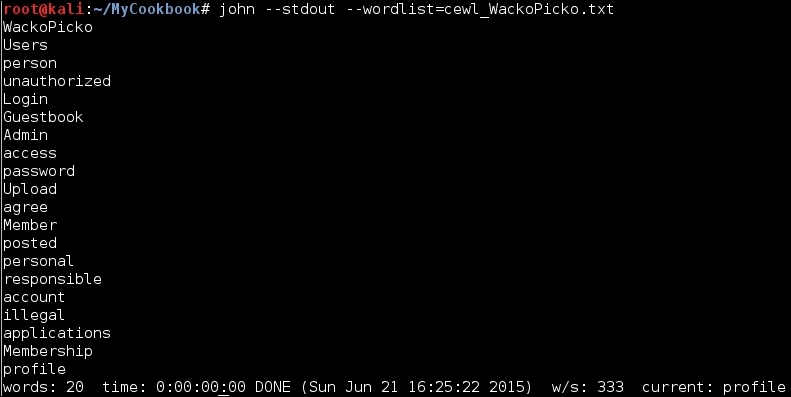Using John the Ripper to generate a dictionary
John the Ripper is perhaps the favorite password cracker of most penetration testers and hackers in the world. It has lots of features, such as automatically recognizing the most common encryption and hashing algorithms, being able to use dictionaries, and brute force attacks; thus, enabling us to apply rules to dictionary words, to modify them, and to have a richer word list while cracking without the need of storing that list. This last feature is the one that we will use in this recipe to generate an extensive dictionary based on a very simple word list.
Getting ready
We will use the word list generated in the previous recipe, Password profiling with CeWL, to generate a dictionary of possible passwords.
How to do it...
John has the option of only showing the passwords that he will use to crack a certain password file. Let's try it with our word list:
john --stdout --wordlist=cewl_WackoPicko.txt
Another feature John has, as mentioned before, lets...
























































